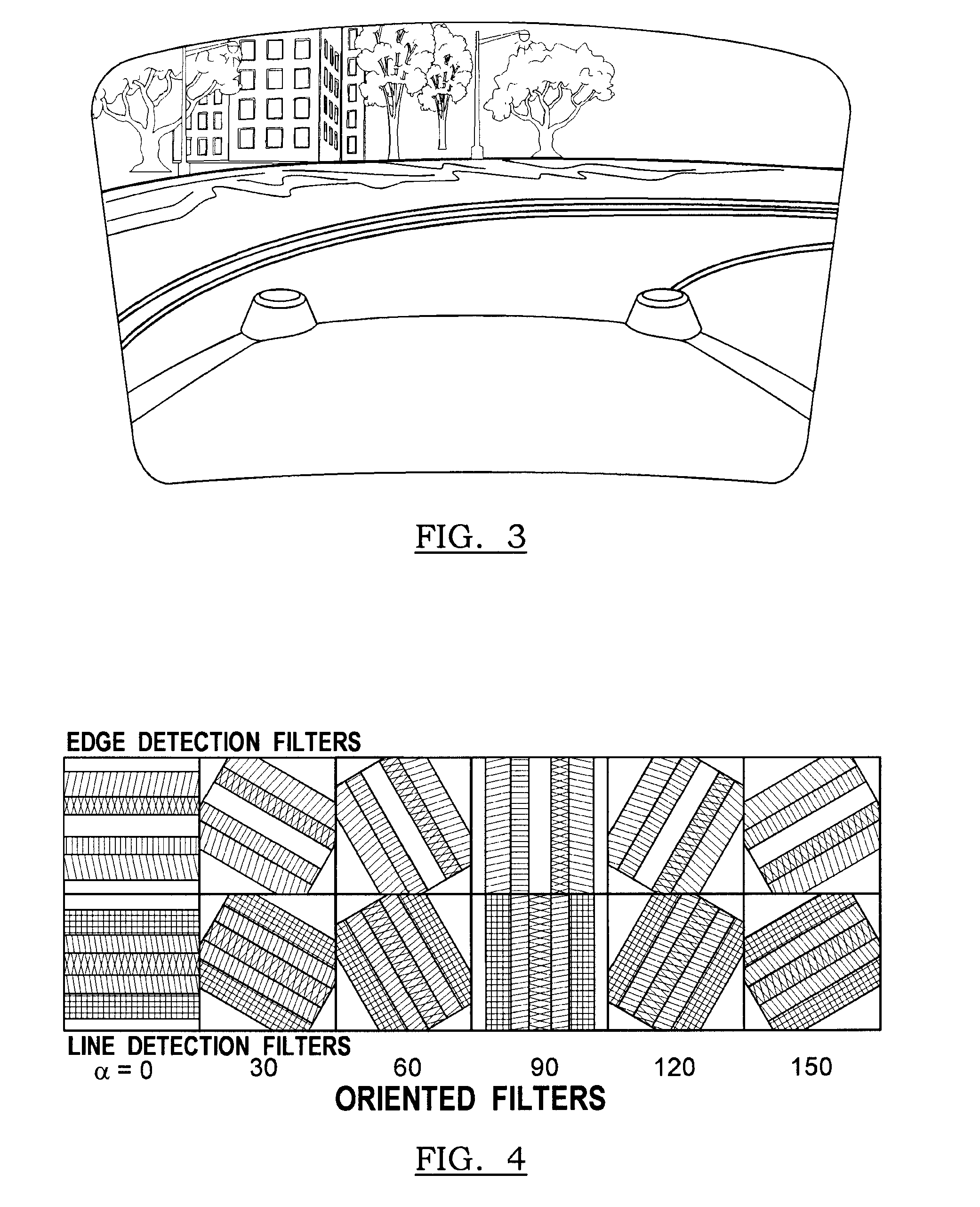Camera-based lane marker detection
a technology of lane marker detection and camera-based system, which is applied in the direction of distance measurement, instruments, process and machine control, etc., can solve the problems of inability to handle the complex environment, the camera-based system is susceptible to incorrectly distinguishing road objects such as curbs and lane markers from shadows of trees, buildings, etc., and achieves the effect of reliable detection of lane markers and low cos
- Summary
- Abstract
- Description
- Claims
- Application Information
AI Technical Summary
Benefits of technology
Problems solved by technology
Method used
Image
Examples
Embodiment Construction
[0021]There is shown in FIG. 1 a lane marker detection system 10 for detecting lane markers in a road of the driven vehicle. The lane marker detection system 10 may be used in an autonomous steering system for road detection or the lane marker detection system 10 may be used for driver awareness for a vehicle driven by a driver to enhance visibility during the daytime or nighttime when road or lane marker visibility is poor or during other instances when visibility enhancement is warranted.
[0022]The lane marker detection system 10 includes an image capture device 12 including, but not limited to, a camera. The image capture device 12 captures an image of the road, typically the area directed in the front of the vehicle. The captured image is processed for identifying both edges of a lane marker as well as a line (i.e., main body) of the lane marker.
[0023]The lane marker detection system 10 further includes a processor 16 for receiving and processing the captured image data by the im...
PUM
 Login to View More
Login to View More Abstract
Description
Claims
Application Information
 Login to View More
Login to View More - R&D
- Intellectual Property
- Life Sciences
- Materials
- Tech Scout
- Unparalleled Data Quality
- Higher Quality Content
- 60% Fewer Hallucinations
Browse by: Latest US Patents, China's latest patents, Technical Efficacy Thesaurus, Application Domain, Technology Topic, Popular Technical Reports.
© 2025 PatSnap. All rights reserved.Legal|Privacy policy|Modern Slavery Act Transparency Statement|Sitemap|About US| Contact US: help@patsnap.com



